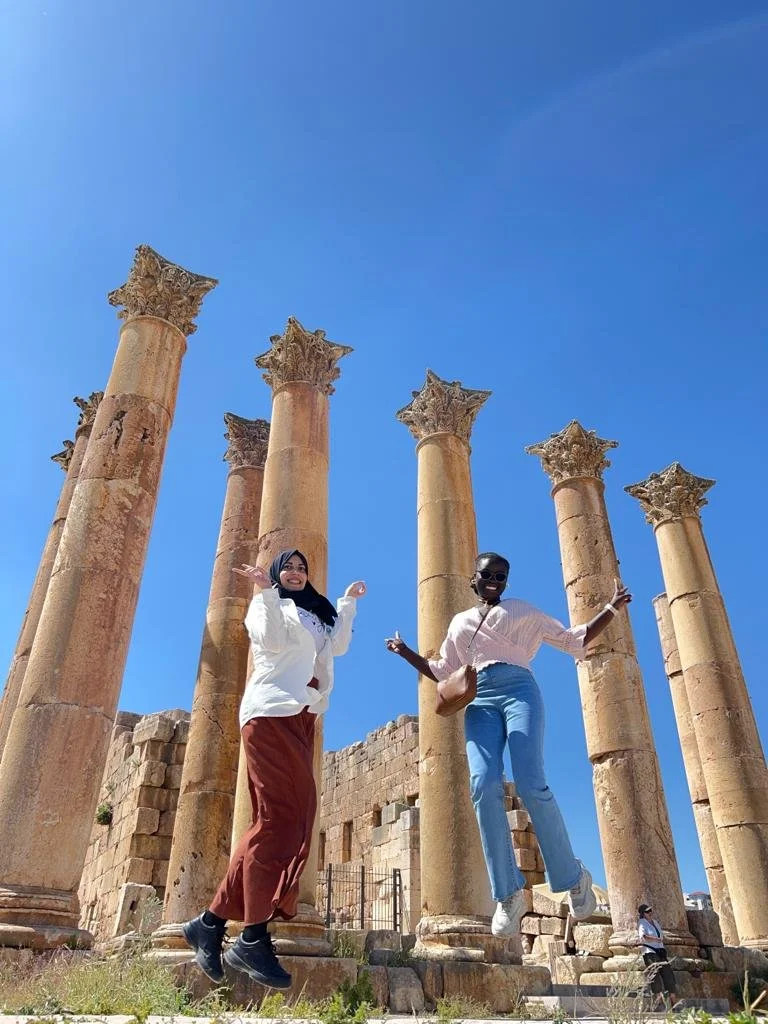"Tunisian Architecture" by Donia Hajjem
If you're considering studying abroad in Tunisia, one of the most fascinating aspects of the country's rich cultural heritage is its unique architecture. Tunisia has a rich and diverse architectural history, reflecting the country's long and complex history of different civilizations and cultures. Here are some key cultural aspects of Tunisian architecture that are worth exploring:
Islamic Architecture
One of the most significant influences on Tunisian architecture is Islamic design, which has been present in the region since the 7th century. Tunisian Islamic architecture is characterized by its intricate geometric patterns, beautiful calligraphy, and stunning domes. The Great Mosque of Kairouan is one of the most important Islamic monuments in North Africa, and it is a must-see for anyone studying architecture in Tunisia.
Roman Ruins
Tunisia was once a major part of the Roman Empire, and as a result, the country is home to a number of impressive Roman ruins. The ancient city of Carthage is a prime example, with numerous ruins and architectural marvels such as the Antonine Baths, the Amphitheatre, and the Punic Port. These ruins offer a fascinating glimpse into the architecture and engineering of the ancient world.
French Colonial Architecture
During the French colonial period in the 19th and 20th centuries, Tunisia saw the construction of numerous modernist and art deco buildings. One of the most iconic examples is the Tunis Belvedere Park, which was designed in the 1930s and features an impressive collection of buildings and sculptures. These buildings reflect the mix of cultures that have shaped Tunisia's history and give a glimpse into the country's modern history.
Traditional Tunisian Architecture
Traditional Tunisian architecture is a unique blend of styles and influences, reflecting the country's diverse cultural heritage. Many traditional buildings feature ornate tilework, intricately carved wooden doors, and beautiful courtyards. Some of the most impressive examples of traditional Tunisian architecture can be found in the medinas of Tunis, Sousse, and Kairouan.
Modern Architecture
Tunisia is also home to some striking modern architecture, with innovative designs and materials being used to construct new buildings and landmarks. The City of Culture, a large cultural center in Tunis, is a modern example of this trend. It features a futuristic design that includes a large amphitheater, art galleries, and exhibition halls.
In conclusion, studying in Tunisia offers an incredible opportunity to explore the country's rich cultural heritage and unique architectural history. From the ancient ruins of Carthage to the intricate tilework of traditional buildings, Tunisia has something to offer to everyone who is interested in architecture. The blend of cultures, styles, and influences make Tunisian architecture a fascinating subject to explore and a truly unique experience for any education abroad student.
For more on Tunisian architecture, check out this video from Donia.
Donia Hajjem is the Education Abroad Program Officer at Amideast/Tunisia.






